Cash
Through a current account
Electronic card (Visa, Master, Dina, etc.)
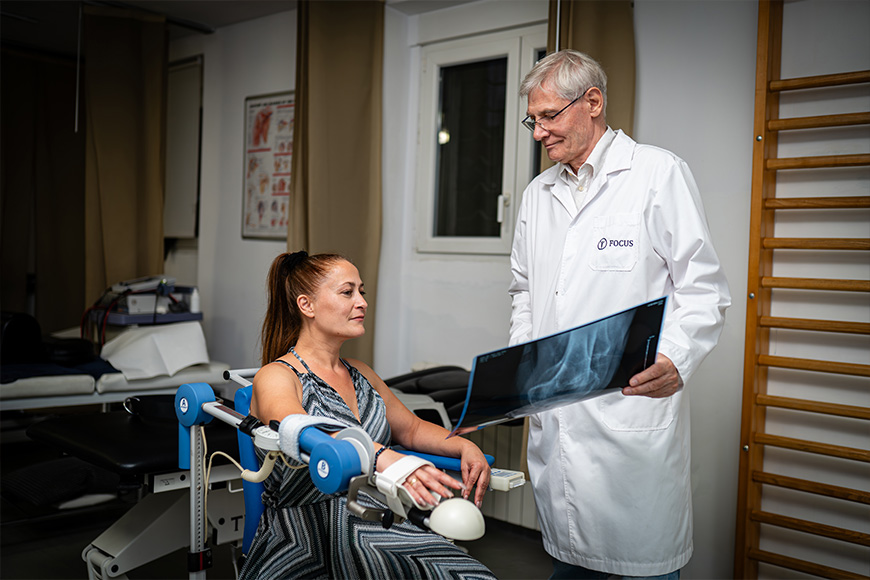
Fokus Fizical 100% guarantees fast and effective healing
Super DISCOUNT! 20% on all therapies in Oktober!
Do not treat yourself over the Internet! Make an appointment via Viber now!
Luxatio, or dislocation of the acromioclavicular joint, is an injury that occurs when the collar bone (clavicle) separates from the acromion, part of the scapula. This joint is extremely important because it connects the arm to the trunk, and injuries to this joint are often painful and can significantly limit shoulder mobility. Although they are most often associated with sports activities or falls, they can also occur in everyday situations.
A dislocation of the acromioclavicular (AC) joint is an injury that occurs when the connection between the collarbone (clavicle) and the shoulder blade (acromion) shifts or moves out of its normal position. Although small in size, this joint plays a key role in the stability and function of the shoulder. Injuries to the AC joint often result from direct impacts, falls, or excessive strain, particularly in sports or activities that involve intense upper body movements. Understanding the symptoms associated with AC joint dislocation can help with the prompt recognition and proper treatment of the injury, ensuring a quicker recovery and return to daily activities. Below are the most common symptoms that may indicate this type of injury:
Shoulder pain that may worsen when trying to lift the arm.
Swelling and bruising around the shoulder.
Limited mobility of the arm and shoulder.
Deformity in the joint area, where the collarbone may appear or be felt as a bump.
The causes of acromioclavicular (AC) joint dislocation include various situations that involve direct or indirect trauma. These injuries most commonly occur due to sports injuries, falls, or collisions, especially in contact sports such as football, rugby, or hockey. In addition to physical impacts, excessive loads or repeated stress on the joint can also contribute to the risk of injury. Understanding these causes can help in the prevention of injuries and guide proper treatment if they occur.
The treatment of acromioclavicular (AC) joint dislocation depends on the severity of the injury and involves various methods depending on the condition's seriousness.
Conservative approach: In milder cases, where the injury is minor and does not involve significant dislocation, treatment is typically conducted through conservative methods. This includes rest and avoiding activities that strain the injured joint. The use of cold compresses can help reduce pain and swelling, while wearing a brace or sling for shoulder immobilization helps stabilize the joint and allows the healing process to begin. Physical therapy is a key component of this approach, consisting of exercises that help restore strength, flexibility, and functionality of the shoulder, thus reducing the risk of long-term complications and recurrent problems.
Surgical intervention: In more severe cases, where there is significant displacement or complete separation of the AC joint, conservative methods may not suffice. In such situations, surgical intervention may be necessary to return the joint to its original position and ensure stability. Surgical procedures can involve the placement of plates, screws, or ligaments to reconnect the parts of the joint and facilitate proper healing. Postoperative rehabilitation is also crucial and may include specialized exercises to restore shoulder function and strength, as well as monitoring to ensure a successful recovery and minimize potential complications.
Both approaches require careful monitoring and treatment adjustments based on the patient's progress, in order to achieve the best outcome and restore shoulder functionality.
How long does it take to recover from an acromioclavicular joint sprain?
Recovery can last from several weeks to several months, depending on the severity of the injury and the type of treatment.
Will I be able to return to sports activities after the injury?
In most cases, with adequate treatment and rehabilitation, patients can return to sports. It is important to consult your doctor before returning to physical activity.
How can I prevent this kind of injury?
Wearing protective equipment in sports, proper fall technique and strengthening the shoulder muscles can reduce the risk of injury.
Is rehabilitation necessary after surgery?
Yes, rehabilitation is key to regaining full shoulder function after surgery.
Therapeutic day (2-3 classic physical therapy procedures and SIS or hilt with kinesi therapy)
6.500 din -
4.000 din
6.500 din -
4.000 din
Therapeutic package of 10 treatments and control examination
55.000 din -
45.000 din
55.000 din -
45.000 din
Cash
Through a current account
Electronic card (Visa, Master, Dina, etc.)
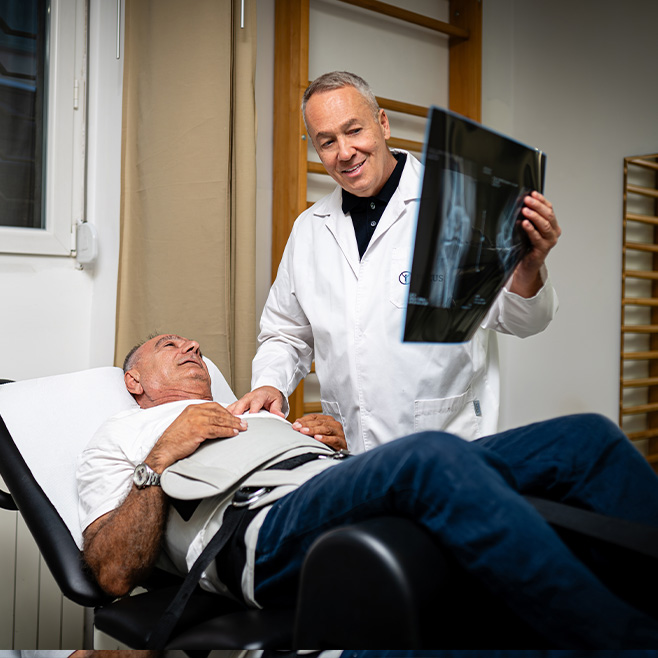
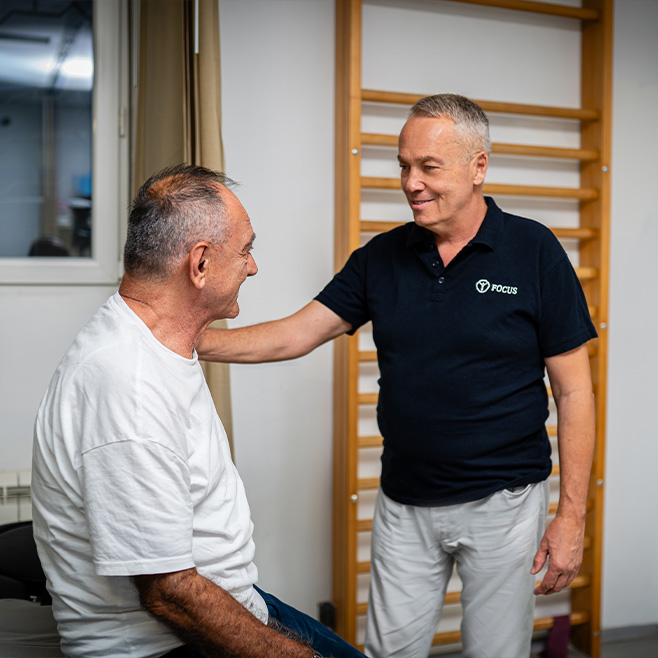
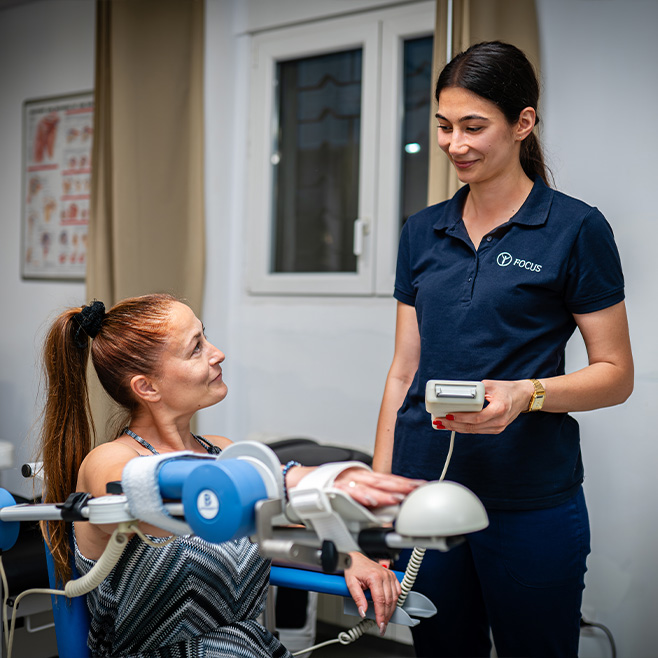
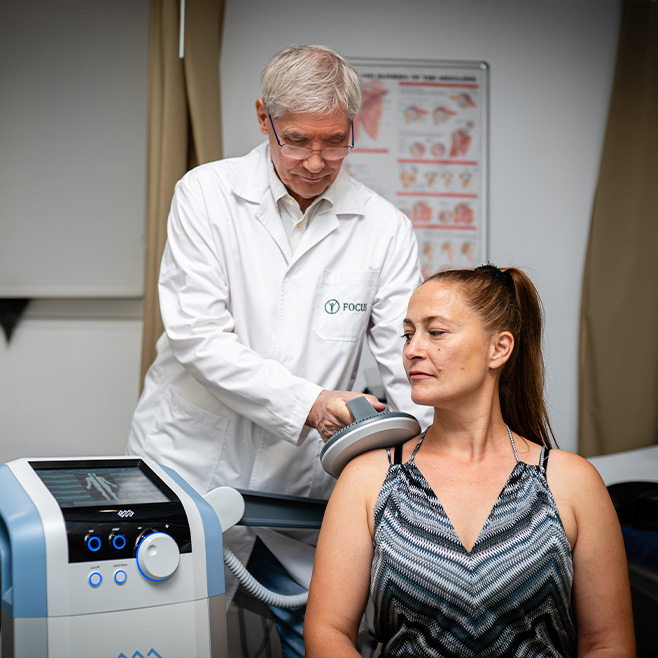
See the experiences of our satisfied patients who successfully recovered with the help of our physical therapy. Get acquainted with the testimonies of patients who faced various joint injuries, sports knee injuries, back injuries and similar problems, which we quickly, efficiently and successfully treated.
Aesthetic surgery
Focus Fizikal is a leading private clinic for physical therapy in Belgrade. For more than 10 years, we have been providing high-quality services that enable quick recovery and healing of our patients.
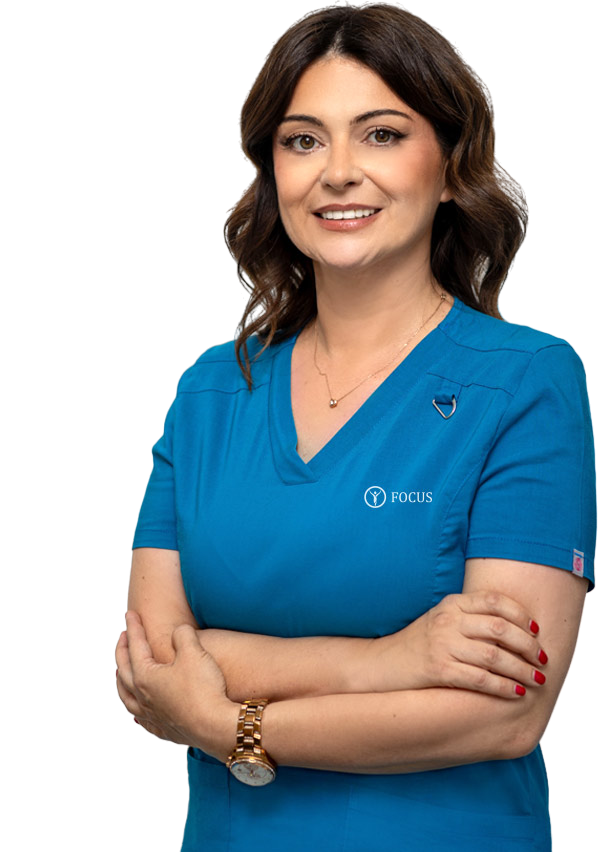
For all our current and future patients, we have made it possible to schedule an appointment online.